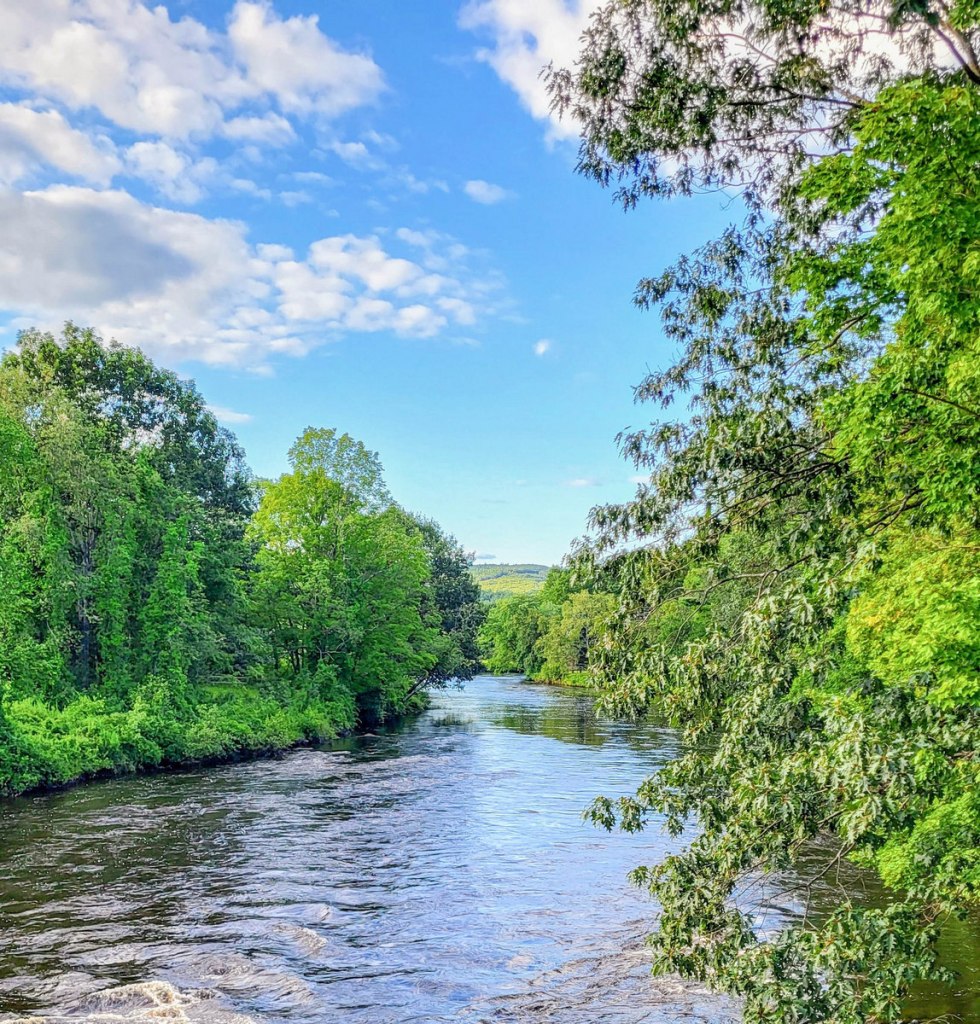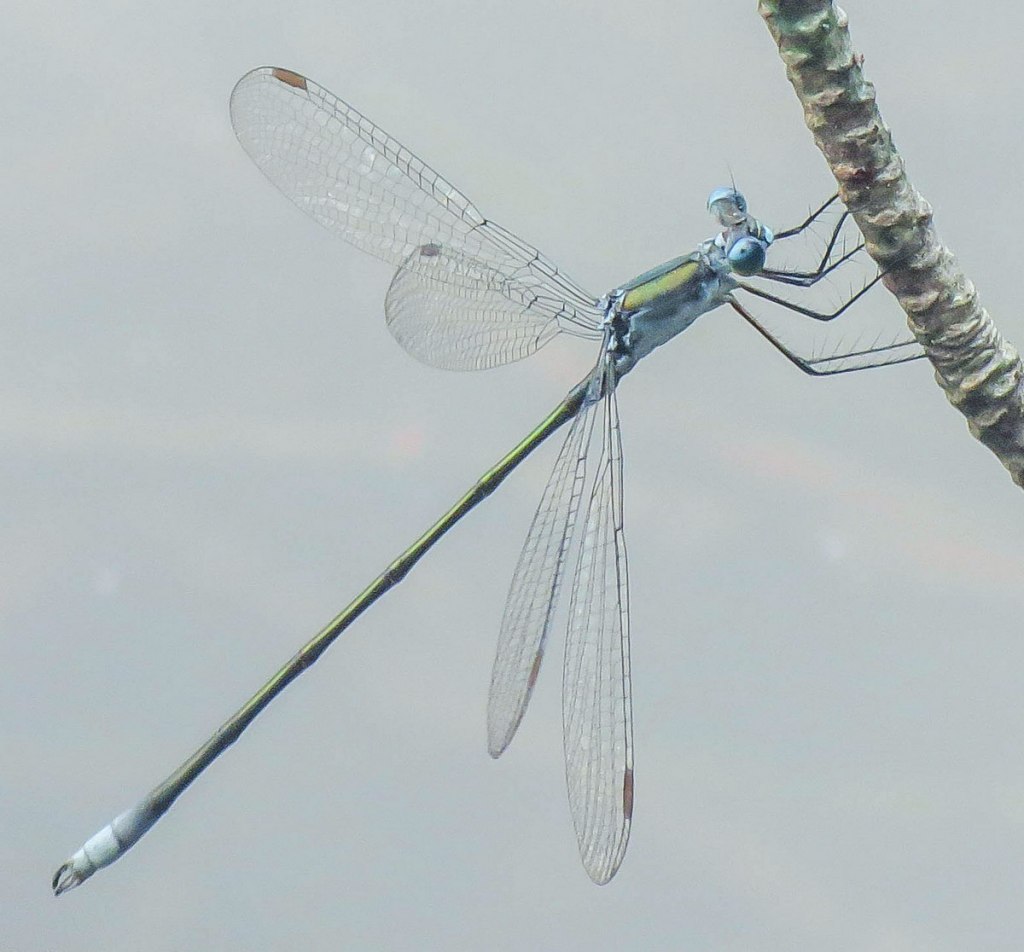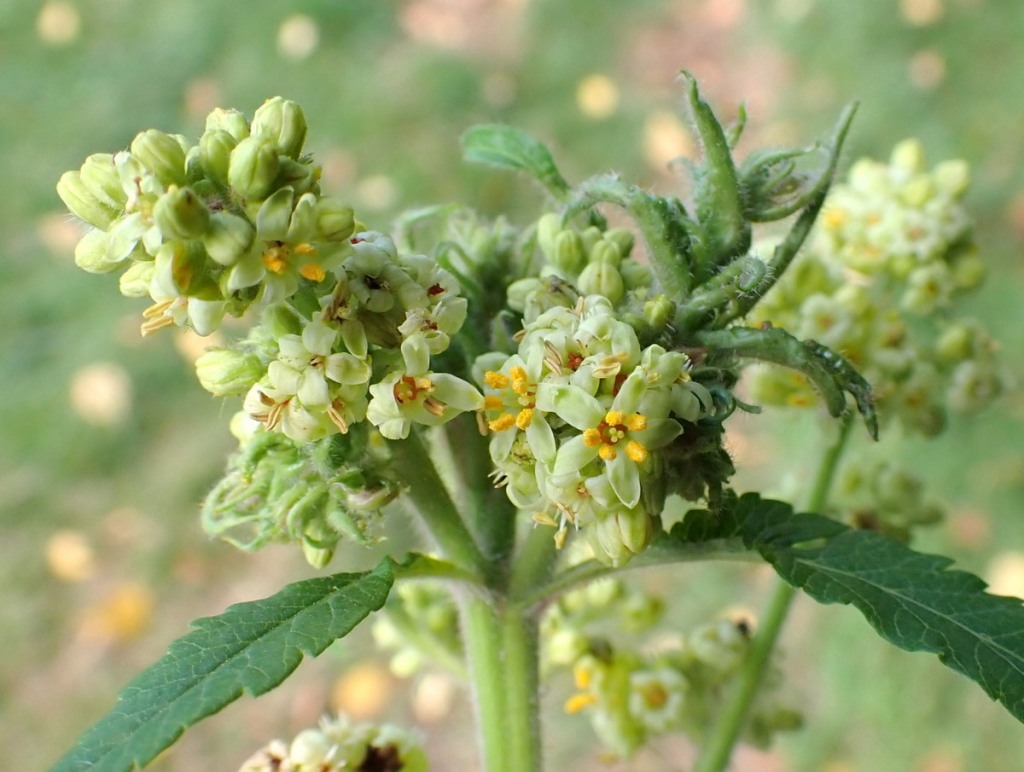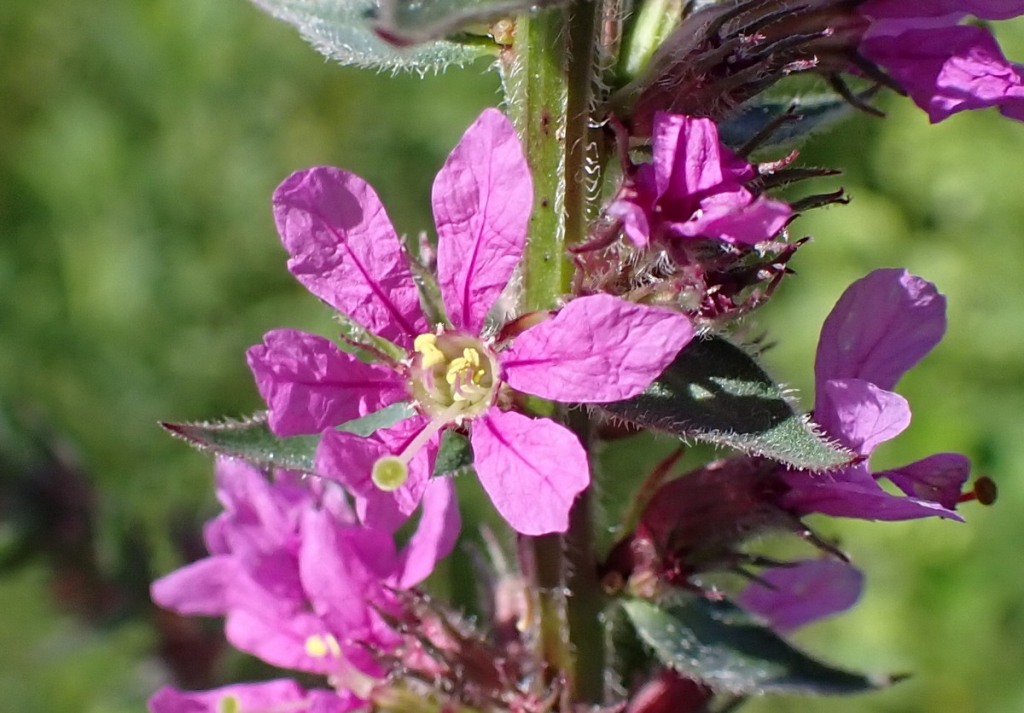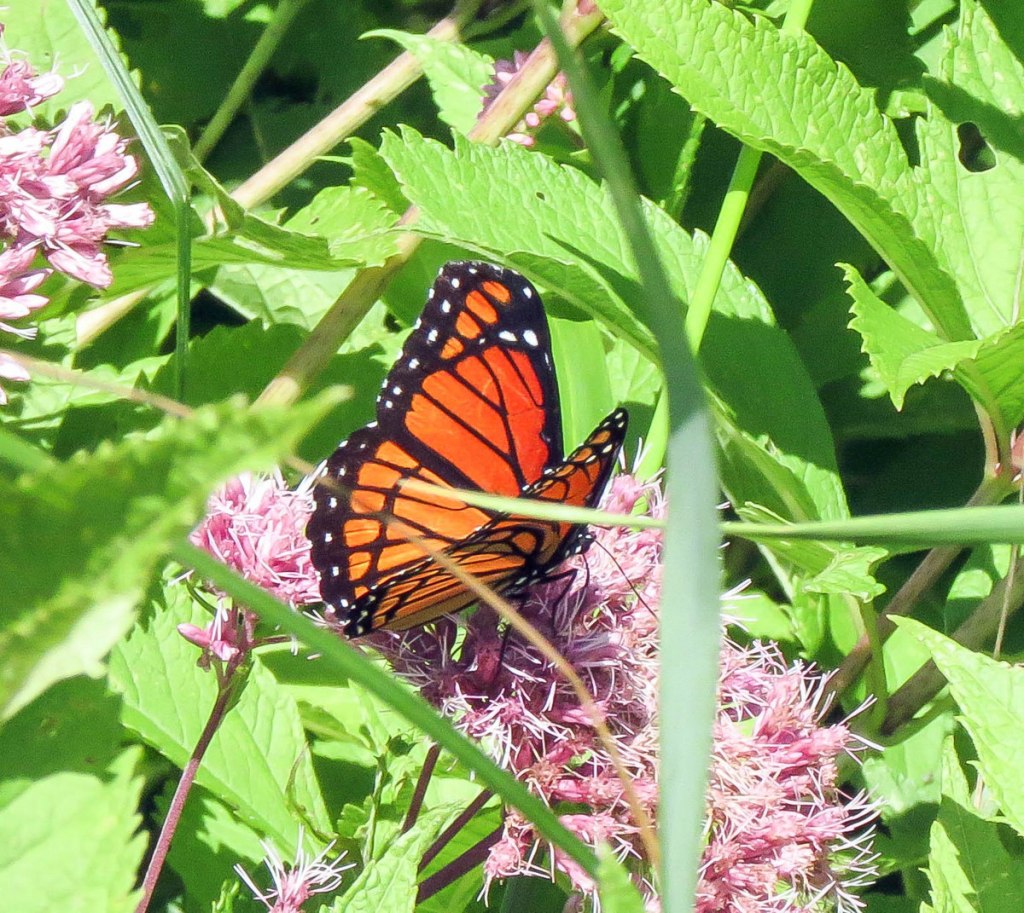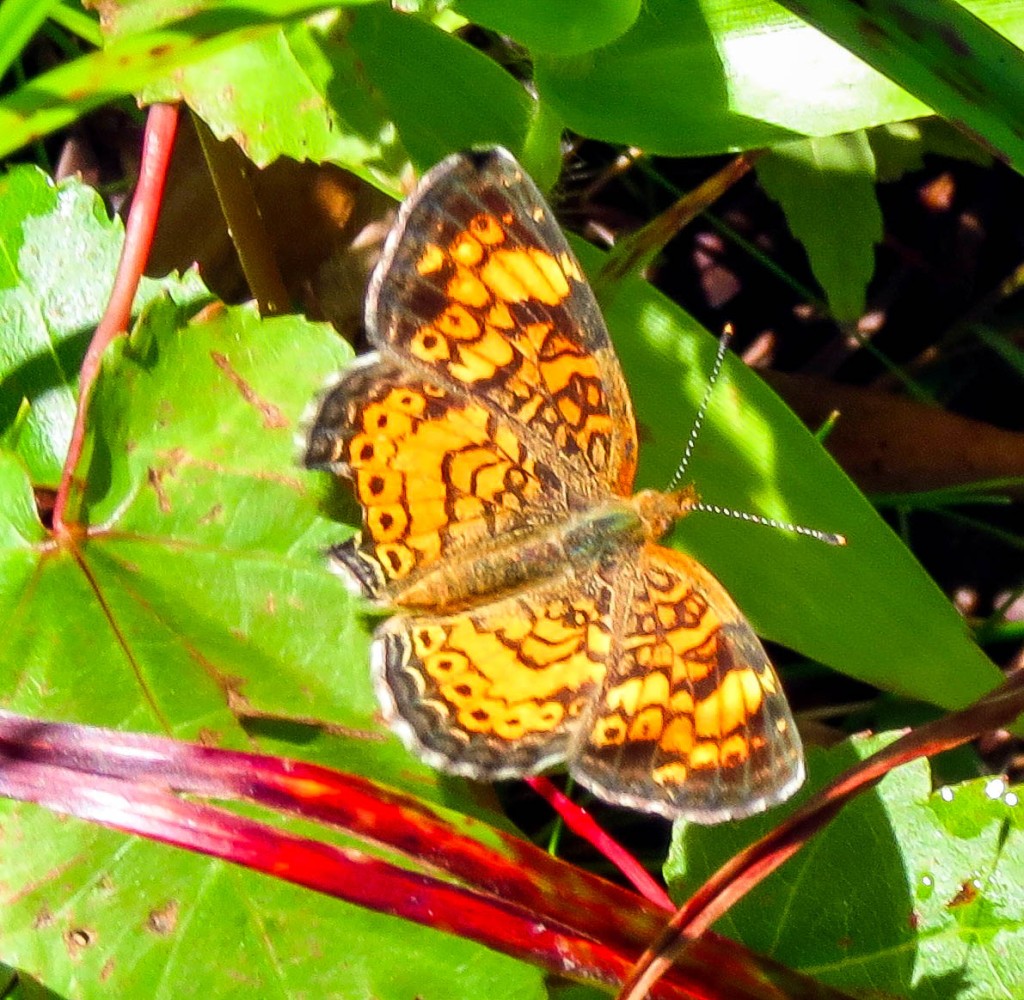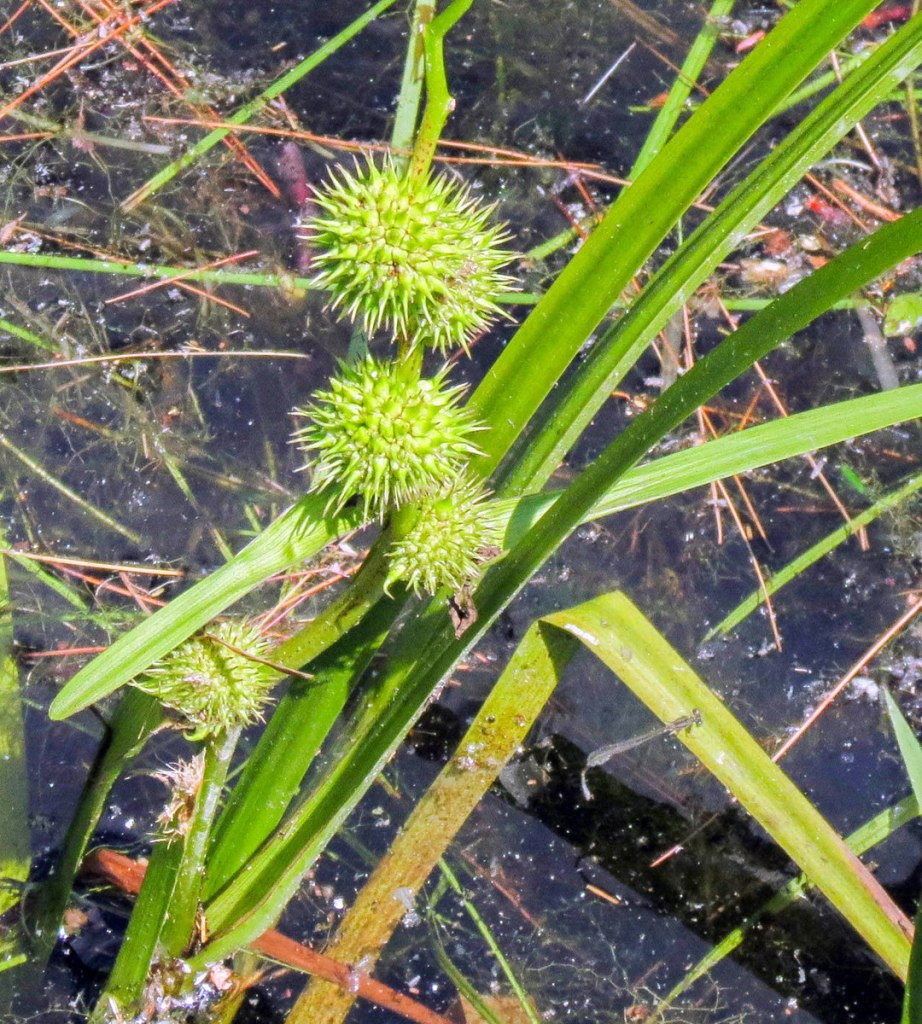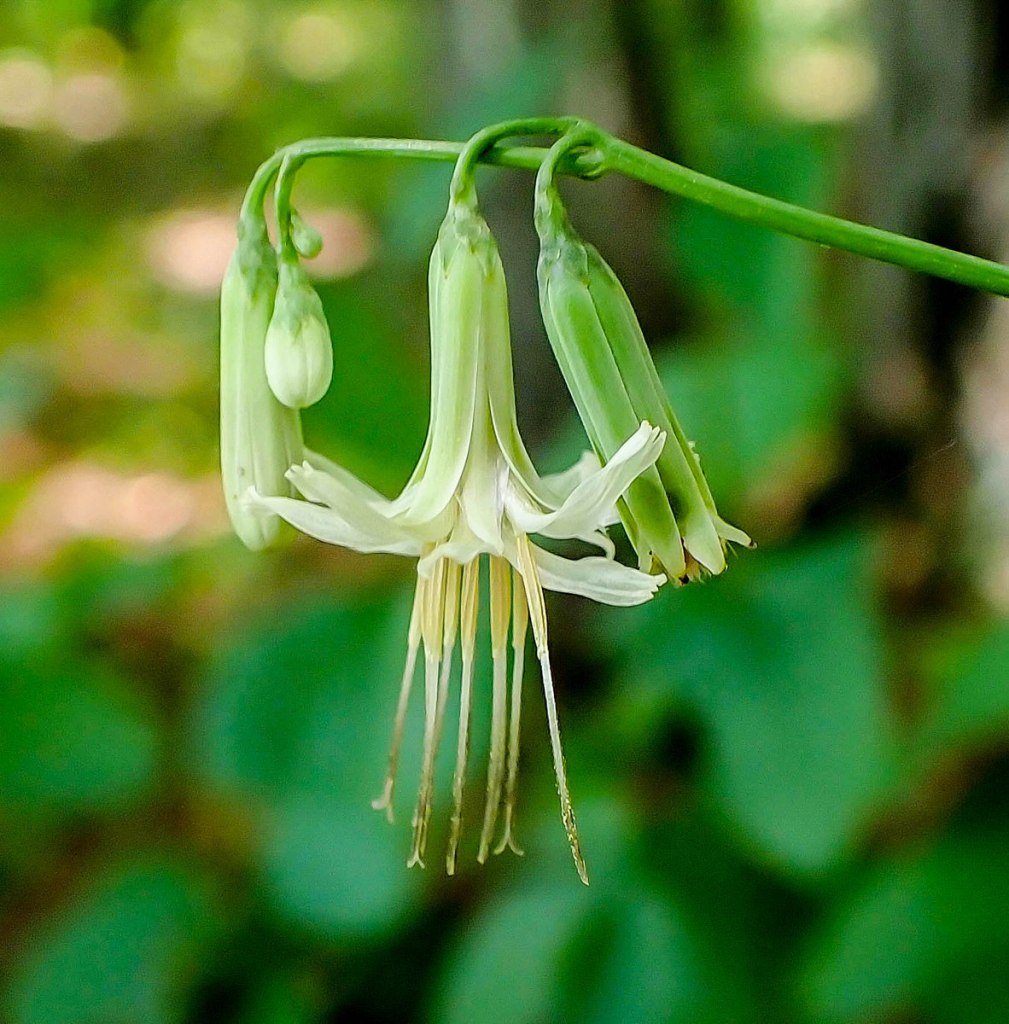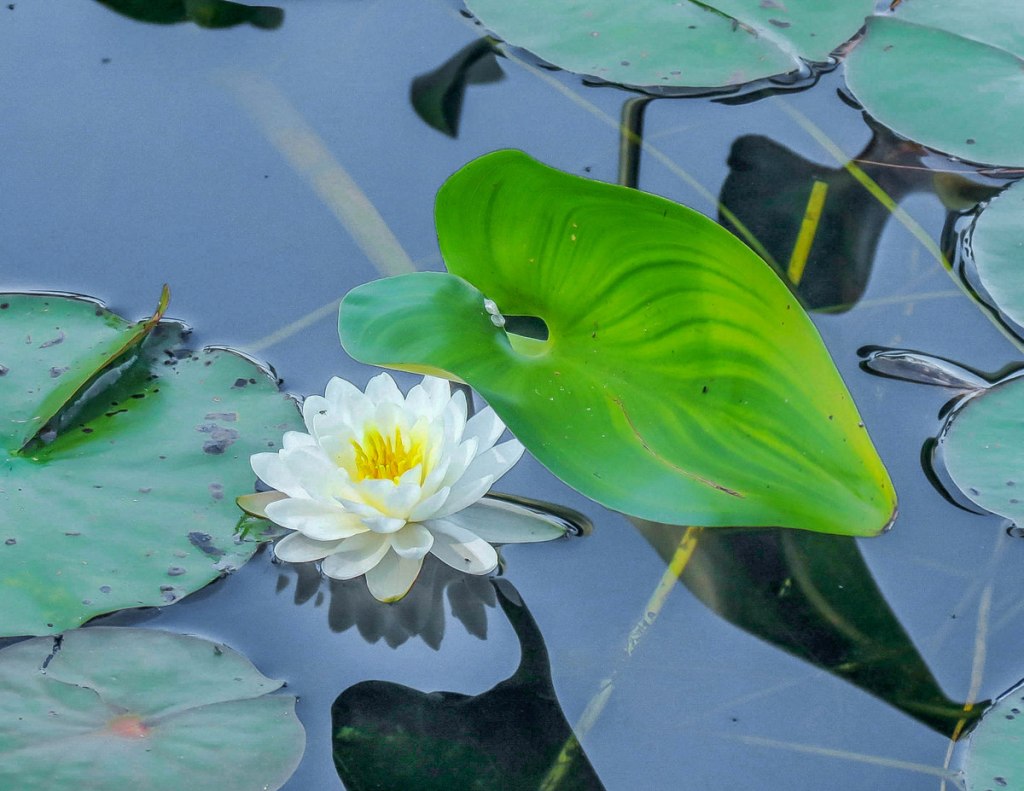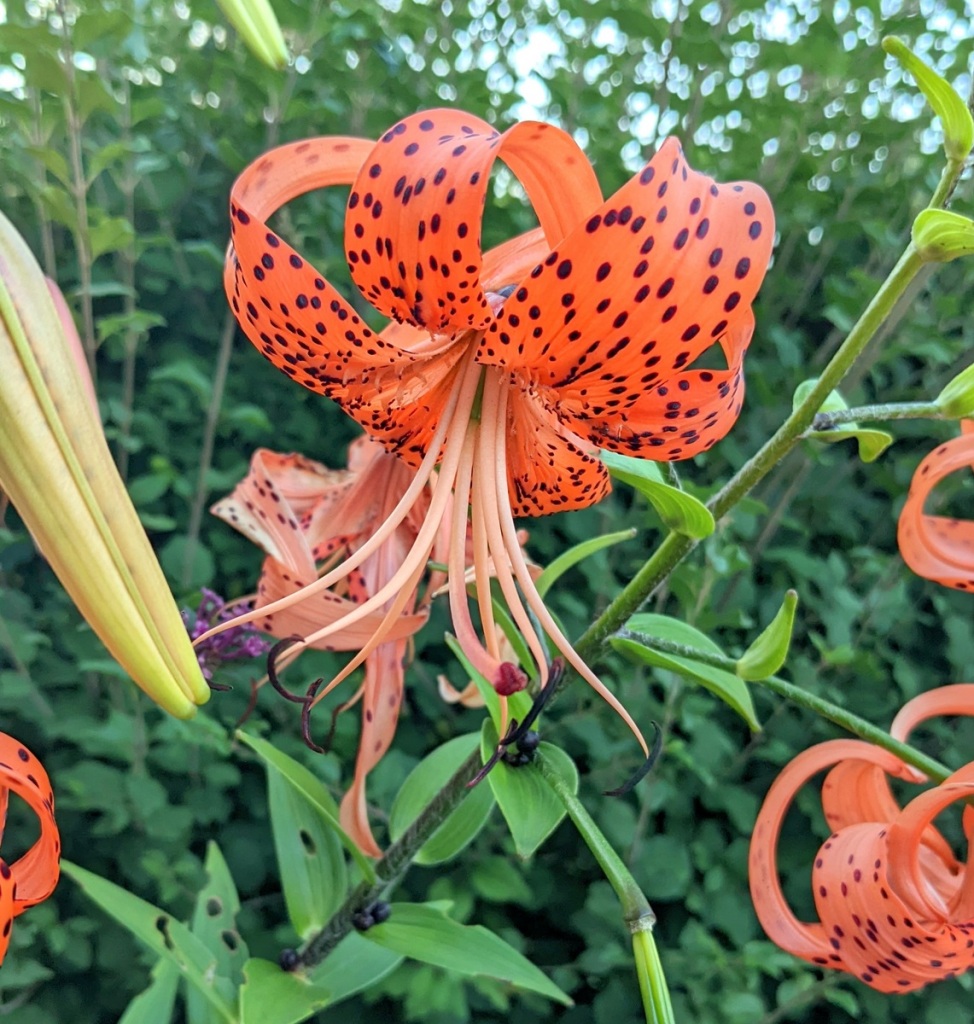
I thought this scene showed signs that we are moving into fall. Other signs are shorter days of course, and also cooler nights. Things are starting to quiet down and insect activity has dropped over the past few days. Last Saturday it never got out of the 50s and was cloudy all day so that put a damper on things. It was the first noticeably cooler fall-like day and nature all of the sudden, seems to have gotten quieter.

But quieter does not mean an ending. In fact it is a beginning, because this is when many of our most beautiful roadside flowers start to bloom. It is when fall starts to really make its presence known.

This Joe Pye weed says it all. Its leaves have gone yellow and will fall soon but right now its color is at its peak. It is as if it had to stop photosynthesizing so it could put all its effort into being beautiful.

And the New England asters this year are amazing. They like the soil to be very moist and this year they’ve got that and they’re responding with masses of bloom.

This shows how their bright yellow centers slowly turn red as they age and are pollinated.

They all seem to do it the same way no matter what color the petals happen to be. This dark purple is my favorite.

Bees didn’t care what color anything was as long as they could collect plenty of pollen. This one’s pollen sacs were filled to bursting. I don’t think I’ve ever seen as many bees as I have this year. This one area I was in when I took these photos must have had many thousands of bees of all kinds flying around.

Bees weren’t the only insects feasting on the asters. There were many clouded Sulphur butterflies here as well. Some were looking a little ragged but this one didn’t look bad. According to what I’ve read there are several broods of this butterfly hatching from spring until fall. Eggs hatch quickly; small green caterpillars will emerge in about a week and feed on leaves. If they need to they can hibernate over winter and will become a butterfly in spring.

There were quite a few monarch butterflies here as well. I counted about a dozen one day and there must have been at least that many a day or two later. We’ve been short of monarchs all summer until just recently. According to what I read on a website called Monarch Joint-Venture, monarchs that emerge in late summer and early fall are the ones that migrate to central Mexico. They’ll spend the winter clustered in trees until weather and temperature conditions allow them to return to their breeding grounds. These adults can live up to nine months while adults in summer generations live only two to five weeks. What the butterflies in these photos were doing I think, is fueling up for their upcoming journey.

Light in one form feasting on light in another form.

And how beautiful all the varying forms -are.

On (or near) the fourth of July I showed you a shot of a flooded corn field, lamenting the fact that the farmer rarely gets a crop from this particular field anymore. Then, nearly a month later the corn had all died and invasive purple loosestrife had taken over, showing how wet the soil had become. This shot was taken quickly with a cell phone and isn’t very good technically, but I don’t care because it still shows how beautiful this place is.
Once again, my goal in doing this is to show you the beauty of nature so you will want to go out and see it for yourself, and as long as a photo conveys that message I don’t get too excited about f-stops and iso settings and focal lengths. That’s why I rarely talk about them here. To be honest the technical aspects of photography really don’t interest me any more than the passing interest an artist might have in the chemical composition of his paints. A camera is a tool, like a hammer or a saw, and I use it only to show you the astounding beauty of this paradise we live in. Instead of just looking at a photo I’d like you to feel the beauty that made me want to stop and take that photo.

Another recent cell phone shot of the same cornfield from a different direction is a good example of what I’m talking about. It’s a terrible photo but I had to stop and look at how beautiful this scene was. I became so lost in the beauty of it; the photo was really just an afterthought as I was about to get in the car. When I see a scene like this love is what I feel; a love of life that has somehow snuck up on me or seeped into me over the years, I don’t know. It’s all so very beautiful and I often ask myself; how could anyone not fall in love with this?

The beautiful yellow grasses lighting up that space in the previous photo are called yellow foxtail grass. Its seed heads catch the light and magnify it tenfold. The round dark bits seen along the stem are its seeds.

I thought we could play “Do you see what I see?” Do you see that strange shape way up high in that cherry tree, over on the left?

It’s the biggest paper wasp nest that I’ve seen; bigger in diameter than the trunk of the tree that supports it. I’d guess maybe 16 inches in diameter at the top, but it’s hard to tell with it being so high off the ground. I’d hate to find it in the middle of a shrub that I was trimming, that I know for sure.

I saw a mallard on a log and looked at it through the camera, admiring its beautiful feathers. I thought that it was looking away from me and I wondered if I could get closer, so slowly and quietly I snuck up on it, thinking all the while that I was pretty slick to have gotten so close without waking it. Then I looked at the photos I had taken when I got home and saw the bird’s open red eye in all of them. The mallard had been watching me the whole time and had let me get as close as I did, so I wasn’t so slick after all. I should have known.

I was surprised when this beautiful dragonfly flew past me from behind and landed on this clump of grass in front of me. It was huge as dragonflies go and its body was like a string of multi colored jewels, so you would think that something this big and this beautiful would be easy to identify, but I’ve had quite a time of it. Finally, I’ve settled on the lance tipped darner. If you look at the tip of its “tail” (rear appendages or cerci) you’ll see why. But I also settled on the lance tipped darner because it likes to perch on / in grass. Others of its kind like the green striped darner that landed on me recently like to perch on trees. All of them, says any expert you care to listen to, are very hard to identify. It is said to be certain you really have to have one “in hand” but I don’t care about names enough to be catching them. What must being caught do to a dragonfly, even if it is released afterwards?

I stood for about a half hour watching this lance tipped darner fly from plant stem to plant stem. Finally as I watched, it landed higher than we see it here and slowly slid itself down the stem until its tip reached the water. Then it shuddered. That’s the only way to describe it; it shuddered several times and each time it made ripples on the surface of the water. These dragonflies slit a plant stem with their scissor like rear appendages (see previous photo) and then lay an egg in the slit. The eggs hatch and the young naiads or nymphs live underwater, finally emerging sometimes as long as four years later, when they will shed their skin and become adults. The tricky thing about these particular dragonflies is how male and females can look so much alike.

About a week before this shot was taken I saw a red dragonfly land on this log for a few seconds and then fly away. I thought it was probably just another red meadowhawk but wait a minute; its wings weren’t clear like the other red meadowhawks I had seen. That’s because, I was to find out later, there is a red meadowhawk called a “saffron winged meadowhawk” and I believe that is what is shown here. The problem was, the saffron coloring (for me at least) was impossible to see unless it landed on something light colored like this log. I stood near here day after day wondering if one would land and finally, this one did. Compared to the 3 inch long lance tipped darner we saw previously this dragonfly is tiny at about an inch long.

I stopped at the river in Swanzey one day and saw what I at first thought was just a pile of walnut size rocks. I wondered why anyone would have collected them and put them there, but then I saw why. There was a stone with an unusually shaped pocket in it and someone had tried to find a stone with the same shape as the pocket. Finally they found one that fit perfectly, as you can see. Someone sat here for who knows how long working at creating something beautiful and then just left it behind. This once again affirms something I’ve thought for a very long time; it isn’t what we create that’s important, it’s the act of creation. I think all of us, whether we know it or not, are just trying to create something beautiful in this life any way we can.

There can’t be an award for longevity among the flowers because there are several that will bloom from June right up until a freeze, and Black eyed Susans are one of them. They get a little lost among all the other beautiful flowers of summer, at least in my mind they do, but as all the other beautiful flowers slowly fade there they are with their cheery yellow blooms; often the only flower left to see.

Another long flowering plant is heal-all, also called self-heal or prunella. The happy little flowers are always at their best in the fall, in my opinion. They do all they can to attract insects and in so doing they make themselves beautiful, but they are very small and easily missed.
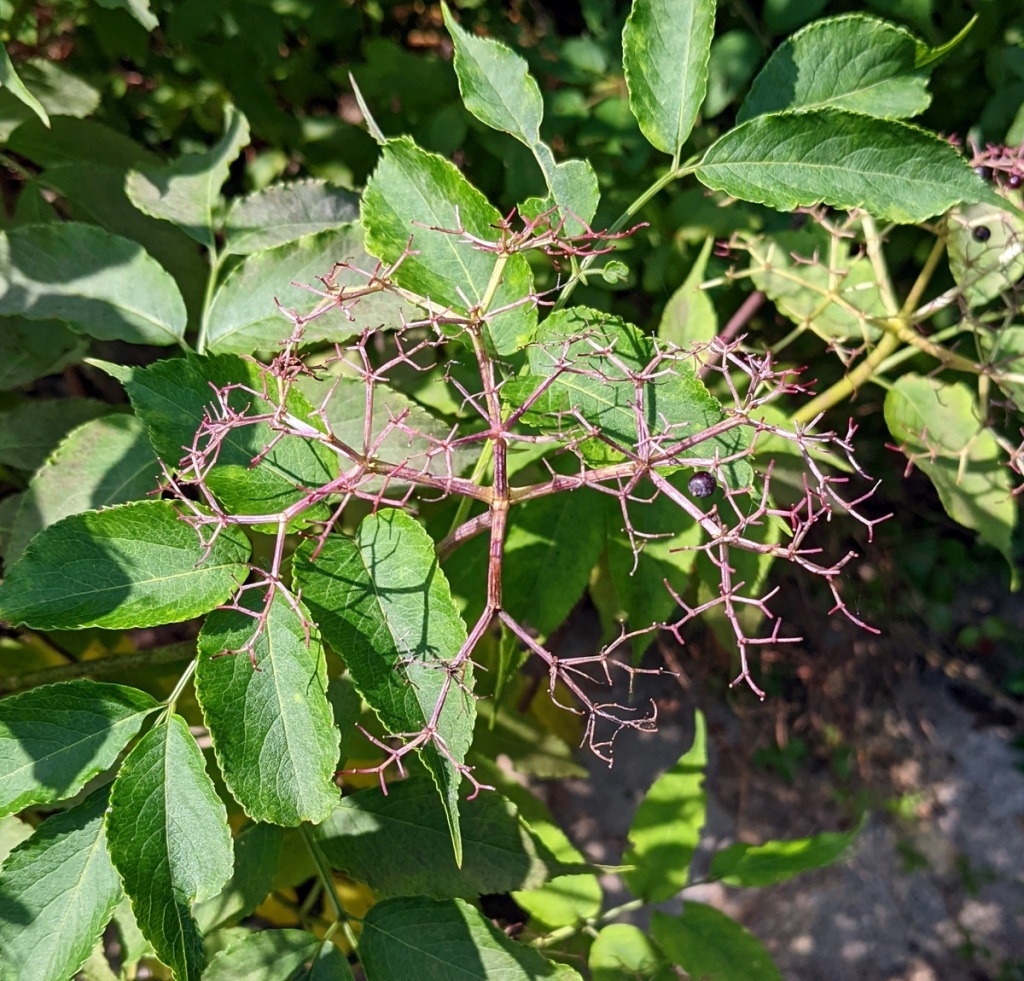
The birds have eaten all the elderberries and what is left always remind me of star charts.

Some signs of fall are quite subtle, like the beautiful splash of red that appears on the top tier of leaves on an Indian cucumber root plant. Not all plants have it but those that do almost always have ripe, deep purple berries standing just above the splash. I’ve always suspected that this splash of color was there to alert and attract birds like turkeys, which eat the berries. The ripe berries appear at just about eye level of a turkey so it makes sense, but I doubt we’ll ever really know for certain.
If you are lost inside the beauties of nature, do not try to be found. ~Mehmet Murat ildan
Thanks for stopping in.
